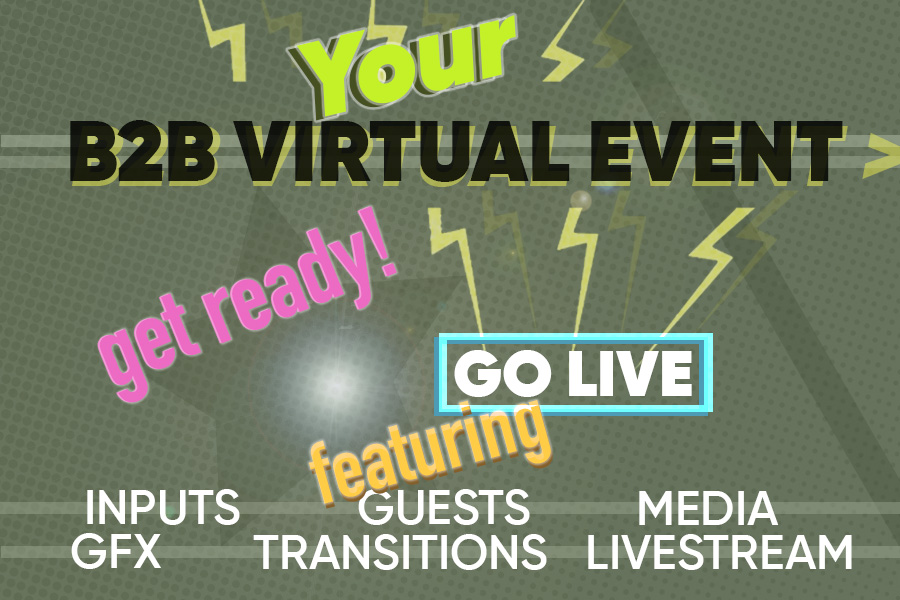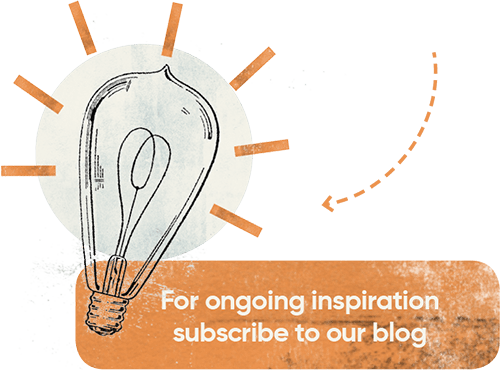
Planning for a slick B2B virtual event
There’s now an array of event platforms which allow B2B marketers to host virtual events. The majority make branding your event relatively straightforward, and allow for integrations which make promoting your event via email and social channels easy. Most of these platforms handle the registration process, and allow marketers to obtain post-event data and analytics measuring attendee engagement.
But mastering the event platform does not guarantee a successful event.
Your virtual event will live or die by the quality of the attendee experience, and that means the quality of the content. Pretty obvious right? Well it’s surprising the number of virtual events which fall flat, as company’s struggle to entertain, educate and inspire their audiences.
So here’s a few thoughts on the best approach to putting on your virtual event:
Every event needs a Creative Lead..
Events are usually managed by busy internal B2B marketing departments. It’s one of the hundred things they’re tasked with and actually in my experience they do a pretty great job in making things happen! Putting on a virtual event requires lining up speakers, creating a registration campaign, building the agenda, briefing internal executives, driving attendance and monitoring the data. Oh, and very often orchestrating people on the day!
But B2B marketers can’t be expected to be Creative Directors. A good event needs to look and feel more like a show, and every show needs a story and a theme.
Your event theme will help inspire your event branding, and help you build a narrative which features the right people, covers all the relevant topics and helps you deliver your key messaging.
A Creative Director will pull together, or create from scratch, the 'pre-recorded' content you'll need for the event. Stale powerpoint-style presentations and old webinar-style presentations no longer cut it. The best events today include slick branded video - driving emotional engagement - at the right times during the event. Well-briefed speakers and interviewees need to drive the energy on the day.
This means that well in advance of the show your Creative Lead will be producing and preparing content, and will be working with the Producer to know exactly where it fits within the event..
Every event needs a Producer..
The skills you find in live video production are almost directly transferrable to B2B digital / hybrid events. Delivering quality video content - both pre-recorded and live - is really the key task in making an event slick and engaging for the audience.
Talking heads, pieces to camera, remote interviews, virtual round tables.. these all require thought. Talent needs directing, regardless of how confident they may be when presenting. Interviewers need to prepare the types of questions which will solicit the right type of responses. Energy needs to be high!
A good producer will know the event platform they are using inside-out, and will be skilled in live streaming, working with camera operators, and vision mixers. On the actual day, a good producer will have timing, cues, crew, media, graphics, talent (and everything else!) ready to go.
Aim for high end production values..
Don’t compare your event with what you’ve seen. Compare your event with live TV... because that’s the way B2B Marketing is heading. Broadcast-level camera tech, switchers, pro-audio kit, and bandwidth is all now accessible in terms of budget. We’re witnessing the beginning of the democratisation of live TV-style content production, although you will need professionals to deliver it!
Trailing your event…
Marketing teams will already be adept at building email and social campaigns, and many event platforms integrate with marketing software (e.g. HubSpot) allowing for the setting up of campaigns designed to drive registrations. Trailing your event this way needs thought. Getting the cadence correct is important. Begin with a 'save the date' campaign - you need to get the event in diaries early. Registrants will then need nudging at the right times, certainly including the crucial 24 hours in the run up to the event.
Of course, the more reasons there are to show up, the easier it is to drive registrations, so your Creative Director needs to focus on what value there is in attending the event. What will delegates learn, and why is it relevant to them and their organisations? And crucially how will they be entertained?
After the event..
The first consideration post-event is to make the event available to those who were not able to attend. Also post-event email needs to go out thanking those who did attend, and use that to nurture further conversations.
We find that much of the content you created for an event is repurposable for your marketing channels, enabling better bang for buck across your content creation budget. The event itself also gives you new content in the form of video, which you can use across your channels. You can edit video snippets for example for your social channels featuring interviews or speaker soundbites. You can also use events to obtain customer testimonials, which can be used in any number of ways in your marketing - and which are notoriously difficult to obtain otherwise.
If your event is annual by nature - like a summit for example - then post-event you can make a highlights / buzz cut which you can use to drive registrations the following year. It works! The better you trail your next event the more attendees you’ll have, and your community will grow over time.
...
TEN80 produce digital and hybrid events, including providing creative direction, crew, streaming and production services. Do you have a project you need help with? Fill out this form and we'll get back to you ASAP!
Posted on Oct 09, 2022


